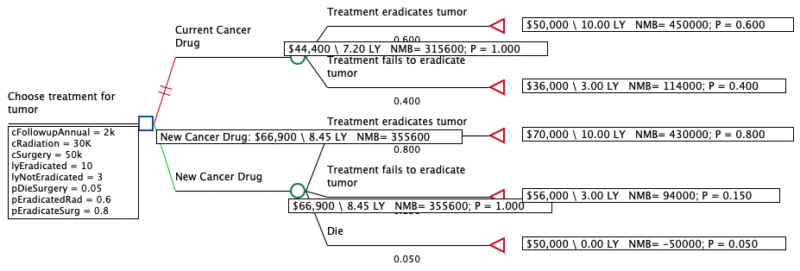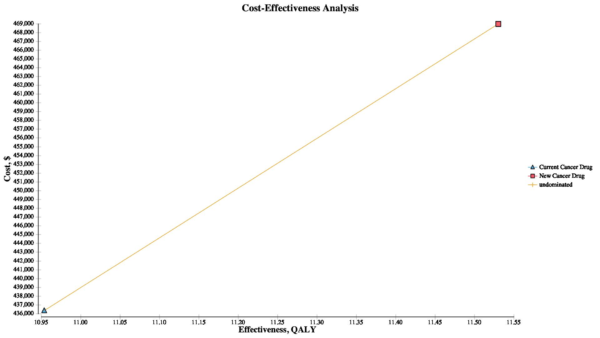Cost-Effectiveness Analysis
Cost-effectiveness analysis compares treatment strategies based on a balance of cost and health outcomes.
More expensive strategies must provide sufficiently better health outcomes to justify the additional cost.



Calculate average cost and effectiveness values by strategy
Once you build your model, TreeAge Pro automatically calculates the average patient cost and effectiveness for each strategy.
TreeAge Pro then compares the average strategy values to determine which is the most cost-effective. This includes calculating the Incremental Cost Effectiveness Ratio (ICER) and Net Monetary Benefit (NMB).
What is Cost-Effectiveness Analysis and why is it useful in health economics?
Cost-effectiveness is the standard methodology used to compare strategies in health economics. It evaluates treatment strategies or health policies based on the average cost and effectiveness per patient and recommends treatments with good health outcomes that come at a reasonable cost.
Cost-effectiveness analysis is used to balance health outcomes with limited resources in healthcare expenditure. We usually want the maximum health benefits based on the resources available. Health measures or effectiveness measures commonly used are Life Years (LY) or Quality Adjusted Life Years (QALYs). In some cases, there is a Willingness-to-Pay (WTP) which determines the cost we are willing to pay for an additional unit of effectiveness.
Cost-Effectiveness Analysis calculates the Incremental Cost-Effectiveness Ratio (ICER) between pairs of strategies. The ICER is the ratio of the incremental cost versus the incremental effectiveness. The ICER represents how much more we will have to pay to get better health outcomes.
The ICER is often compared to a WTP. If the ICER is less than the WTP, then we can justify the more expensive treatment based on the gains in health outcomes.
